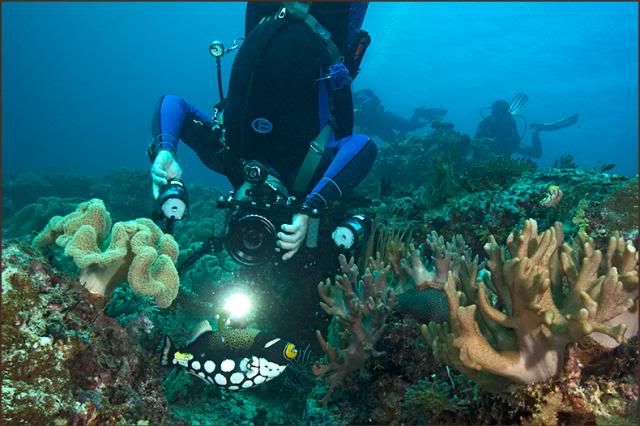Just interested to hear some thoughts and philosophies regarding your "ideal" diver. What skills are most admired by you?
For example...
Is it the diver (no matter what path they took to get there) that has practiced and configured a rig until they can hold a perfect static trim?
Or is it the diver that can dive any gear thrown at them and still look comfortable doing it.
And I imagine there are probably a few that want the diver to be able to do both!
I originally started this in Advanced but moved to Basic because I would like to get both the advanced divers perspective but also thoughts from new divers.
So what are your thoughts?
Lisa,
There are so many different factions and styles in diving.
I never even heard the word "trim" as a diving term until 10 years ago.
Before that people were just known as "really good divers" or "not so good divers".
As far as I can recall, the fanatasism about perfect trim was started by the DIR group.
That was one of their core requirements for cave diving. Hanging around in a skydiver position with my feet up flipping my fins around and my hands clasped isn't my idea of anything usefull.
As a California open water diver, I don't particualrly care that much about holding perfect trim. Can I, yes, but the type of diving I do doesn't really require it. In fact, my style would require much more of a dynamic composition being that I'm a hunter and a cruiser.
I tend to like to strap on a huge tank and cover a lot of ground with a very minimalistic set up, and my trim would consist of orienting my body position towards the direction of travel identical to a freediving with my feet straight back kept within the slipstream. If I'm climbing a hill my body is oriented towards the slope of the hill. If I'm dropping off a wall my head is down pointed towards the direction of travel. My whole goal is to optimize my hydrodynamics and keep my body within a narrow slipstream for the most efficiency and least amount of drag. As you know I've even designed gear around this principle. This is what I do when I hunt.
When I take photographs I will add a wing to the equation so I can hover and concentrate on sitting in one spot lining up for the perfect shot.
When I just sight see I will most times also have a wing on and just putt along and look at things.
One style is not better than the other, they are all different, but they all have their specific application. I've never caved or wrecked so I don't know any specifics, but I know those activities require yet another set of protocols.
Anyone that tells you that any particular style or gear choice is the end all and everyone should be that way is an idiot.
For the second part of your post regarding an ideal diver:
High experience level doing many different dives in many different environments and LEARNING from those dives.
Comfort in the water.
Very high panic threshhold (lacking in todays basic training due to elimination of basic mild harrassment).
Knowing when to call a dive and not being to proud or macho to ignore your gut.
I've called dives many times just because I didn't like it, something just didn't feel right, so I turned around and went into the shallows and collected empty baby abalone shells that the Cabezon puked up.
Once all the core skills are mastered it becomes more of a mental mindset and awareness of trusting your gut. Not taking chances that you know are high risk chances.
Some divers never grow out of a daredevil mindset and think that going super deep or going out on a big day and getting thrashed so people ohh and ahh think is the definition of a good diver. I think the person who has the sense not to go out on those days is a better diver.
Good example, look at Max Bottomtime's video on the guys trying to get out off the beach at OML during some big surf, WHY???
And yes, any good diver has the ability to take any strange gear and put it on and go dive. They have enough of an open mind to figure things out and have not been programmed to the point where they cannot think outside of a set of very strict rules.
That includes poodle jackets.
And I have to agree with the one-with-the-water feeling. It is a revelation and a true zen moment.
Freediving is a very direct path towards this end. Everything must be optimal in order to be successful, including your mindset. There is no "life support" equipment to count on, it's all you.
Thank you.





